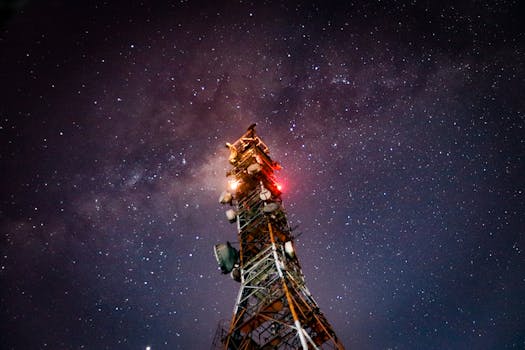
MEO Satellites: Introduction to Medium Earth Orbit Technology
MEO satellites, or Medium Earth Orbit satellites, are a type of satellite that operates in an orbit between 2,000 and 36,000 kilometers above the Earth’s surface. This orbit is higher than Low Earth Orbit (LEO) satellites but lower than Geostationary Earth Orbit (GEO) satellites. MEO satellites are designed to provide global coverage and are often used for navigation, communication, and weather forecasting purposes.
MEO satellites have several advantages over traditional GEO satellites, including lower latency, higher bandwidth, and improved reliability. Because MEO satellites are closer to the Earth’s surface than GEO satellites, they can provide faster and more responsive communication services. This makes them ideal for applications such as voice and video communications, data transfer, and online gaming.
How MEO Satellites Work
MEO satellites work by transmitting and receiving signals to and from Earth-based stations. These signals are then relayed to other satellites or to ground-based stations, allowing for global communication and data transfer. MEO satellites use a variety of frequencies, including Ku-band, Ka-band, and L-band, to transmit and receive signals.
MEO satellites are typically launched into orbit using a rocket, such as the Ariane 5 or Falcon 9. Once in orbit, they use their onboard propulsion systems to reach their final position and begin operating. MEO satellites are designed to be highly reliable and can operate for up to 15 years or more, depending on their design and mission requirements.
Applications of MEO Satellites
MEO satellites have a wide range of applications, including navigation, communication, and weather forecasting. One of the most well-known applications of MEO satellites is the Global Positioning System (GPS), which uses a constellation of MEO satellites to provide location information and timing signals to GPS receivers on the ground.
MEO satellites are also used for communication purposes, such as providing internet access to remote or underserved areas. They can also be used for voice and video communications, data transfer, and online gaming. In addition, MEO satellites are used for weather forecasting and Earth observation, providing valuable data and imagery to scientists and researchers.
Future of MEO Satellites
The future of MEO satellites looks bright, with several new constellations and missions planned for launch in the coming years. One of the most notable examples is the O3b constellation, which will provide high-speed internet access to remote and underserved areas. Other examples include the OneWeb constellation, which will provide global internet access, and the Amazon Kuiper Systems constellation, which will provide high-speed internet access to homes and businesses.
In addition to these new constellations, there are also several new technologies being developed that will improve the performance and capabilities of MEO satellites. These include advanced propulsion systems, more efficient solar panels, and new materials and manufacturing techniques. As a result, we can expect to see even more capable and efficient MEO satellites in the future, enabling a wide range of new applications and services.


